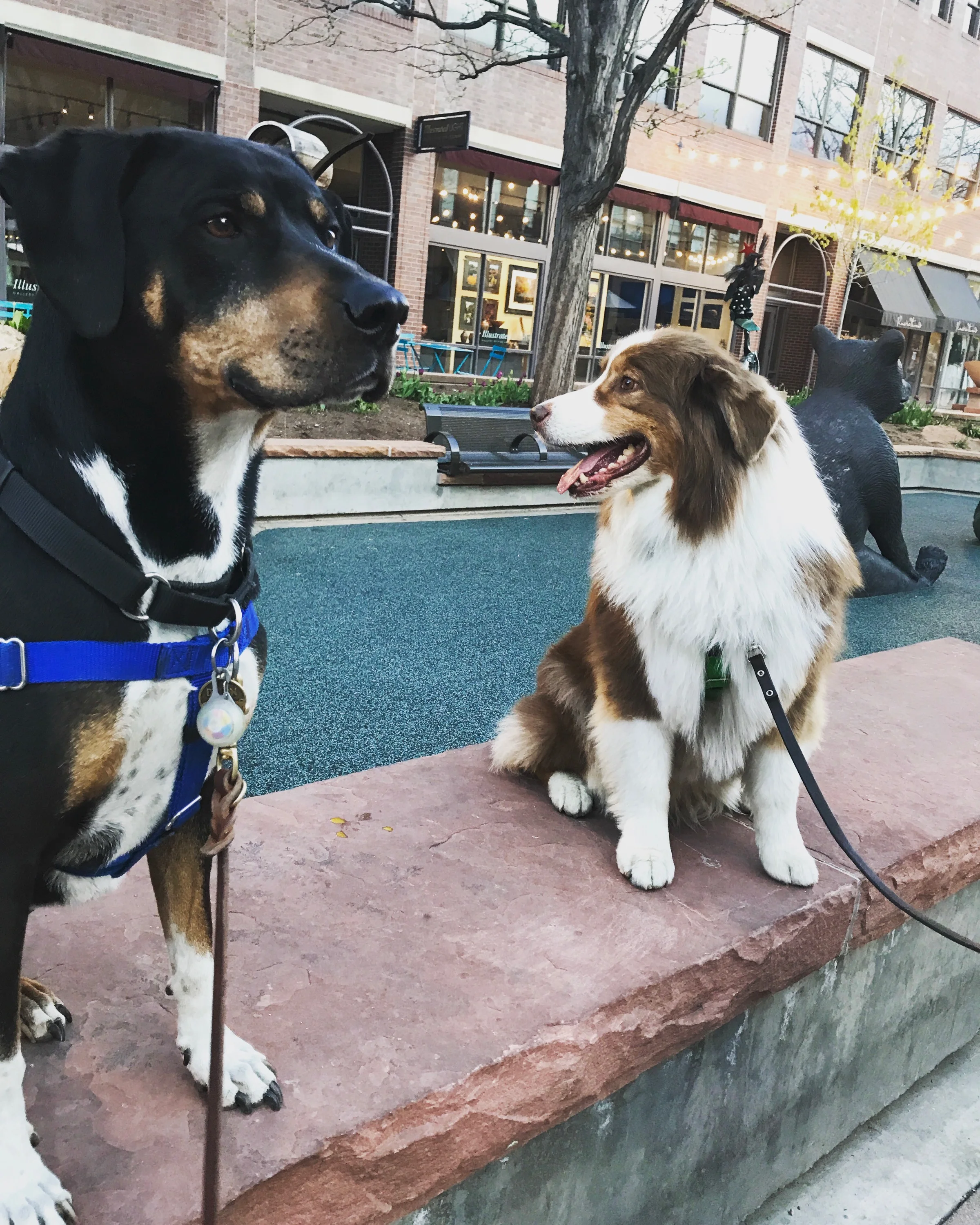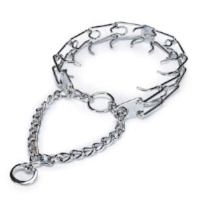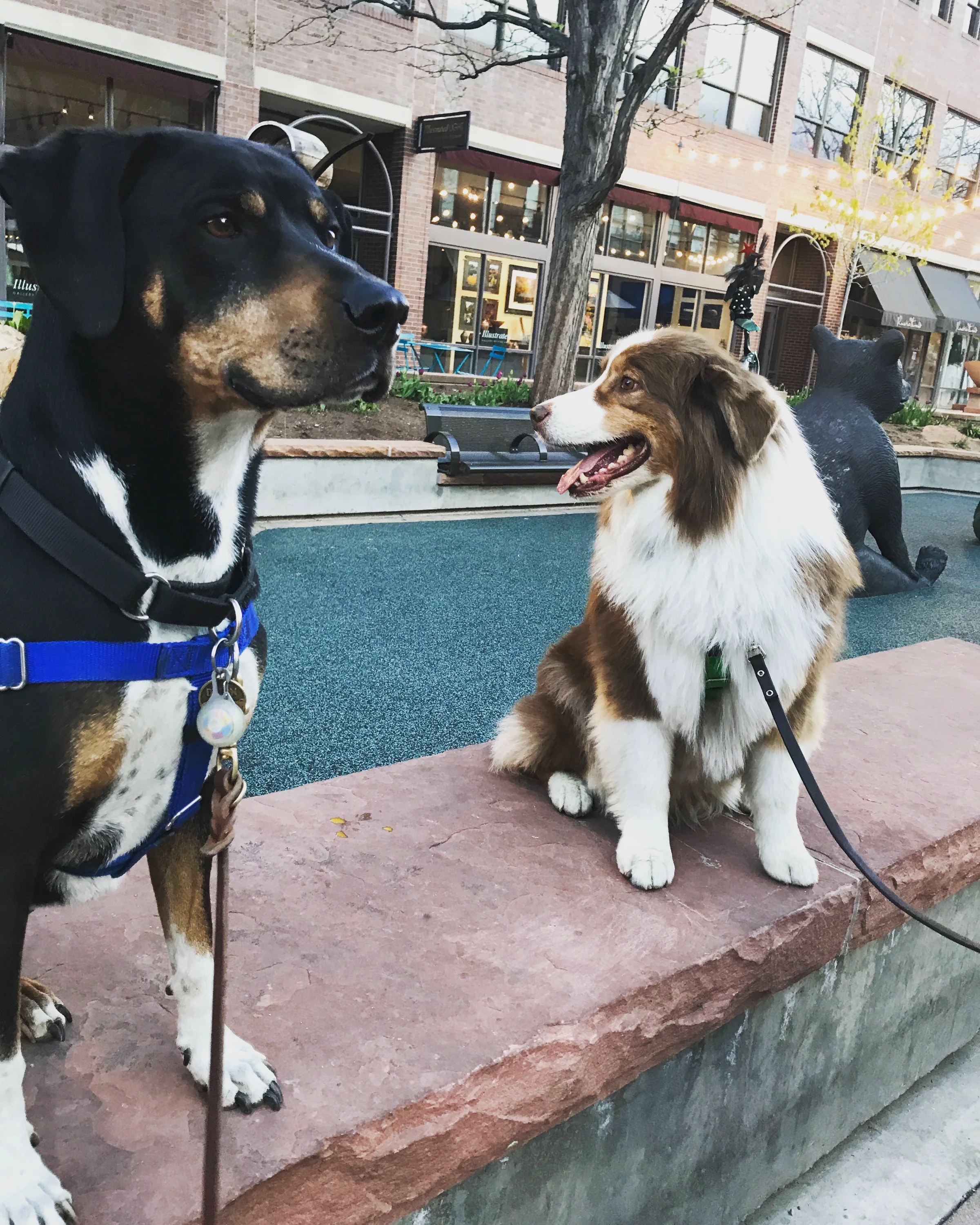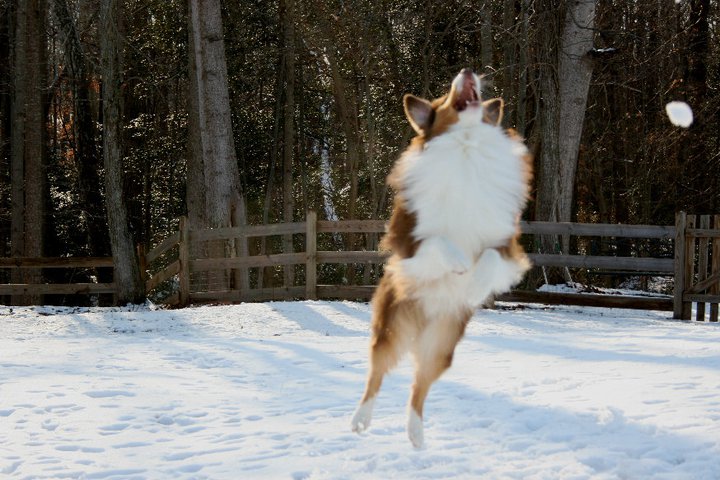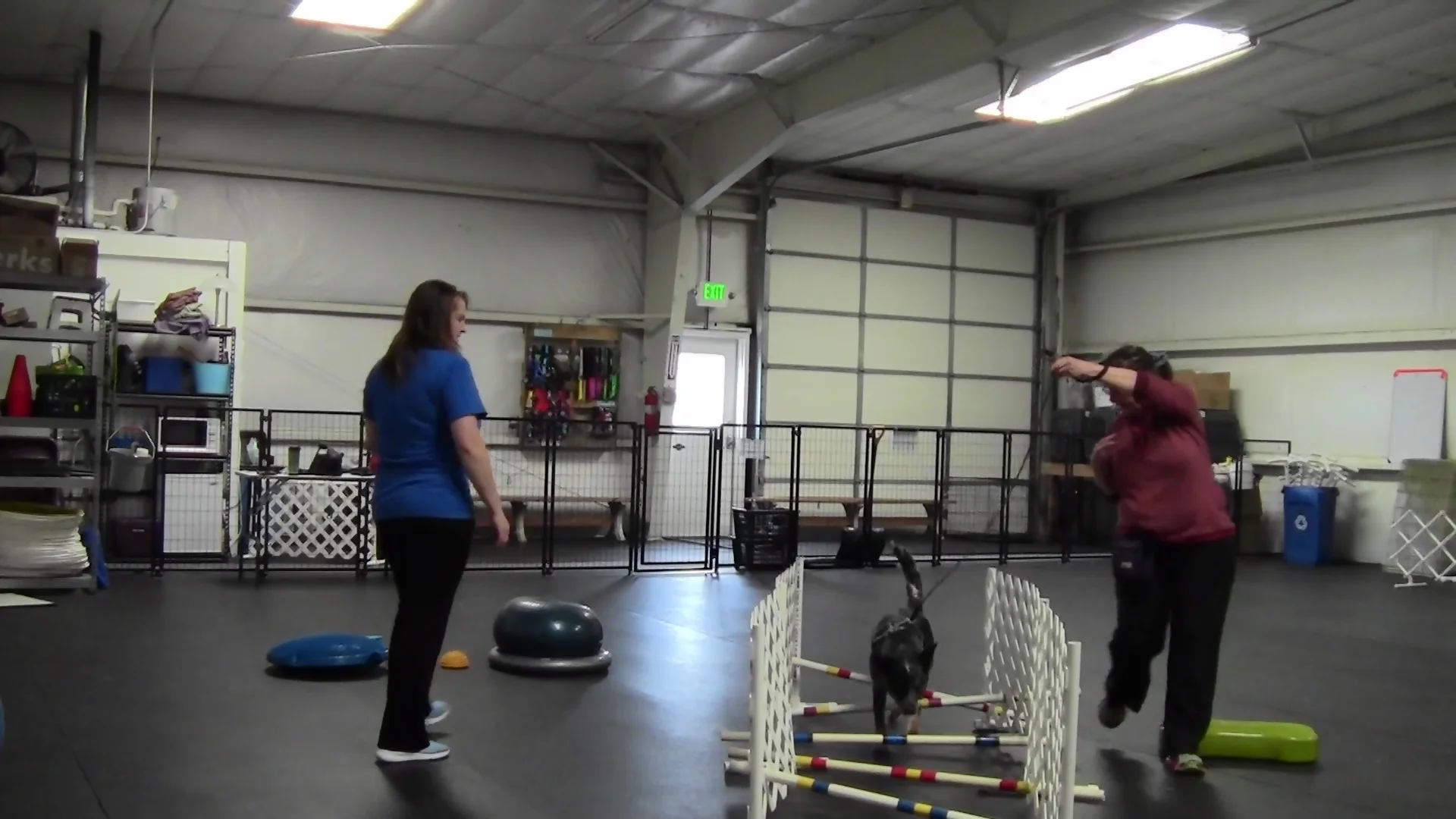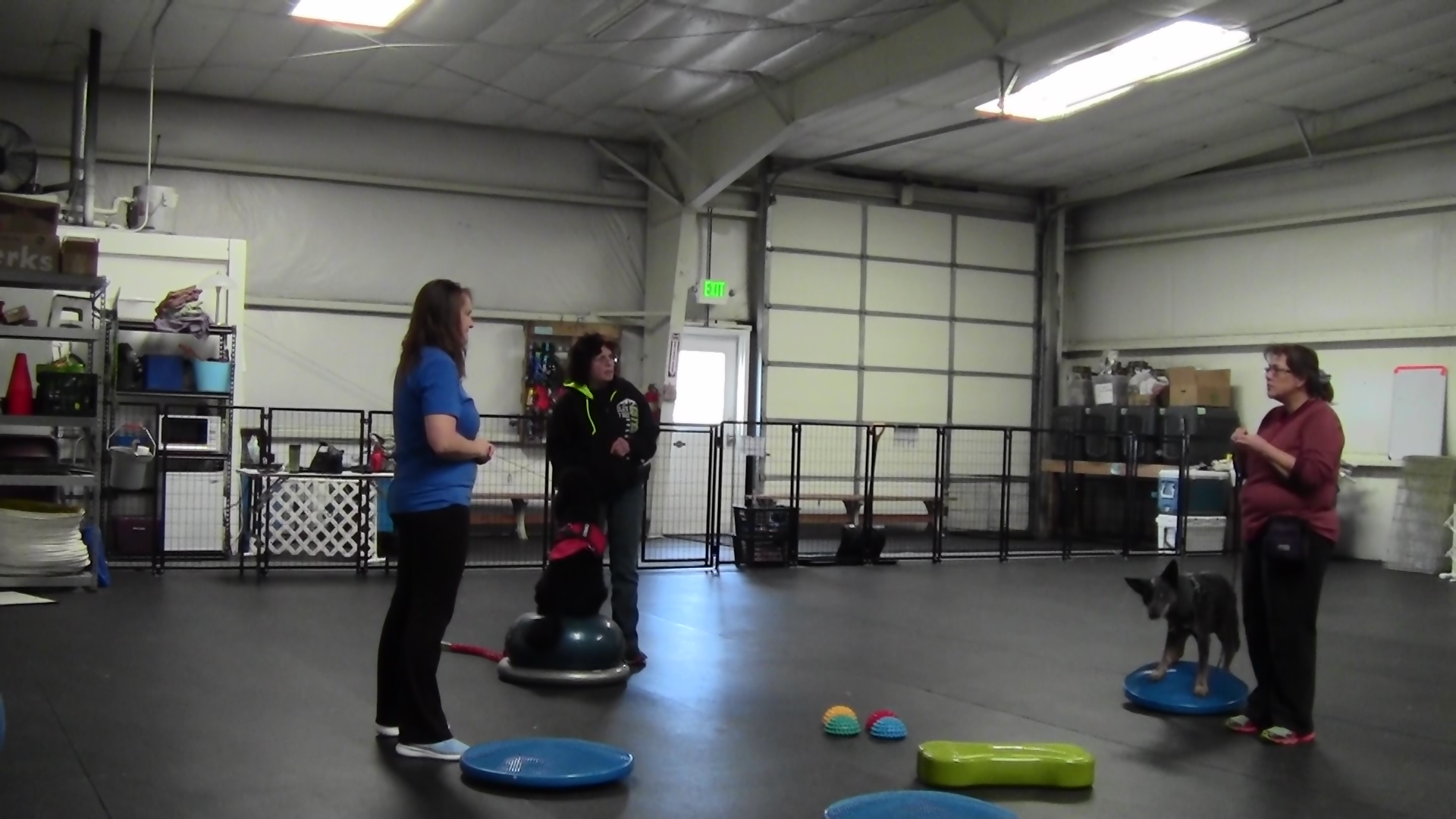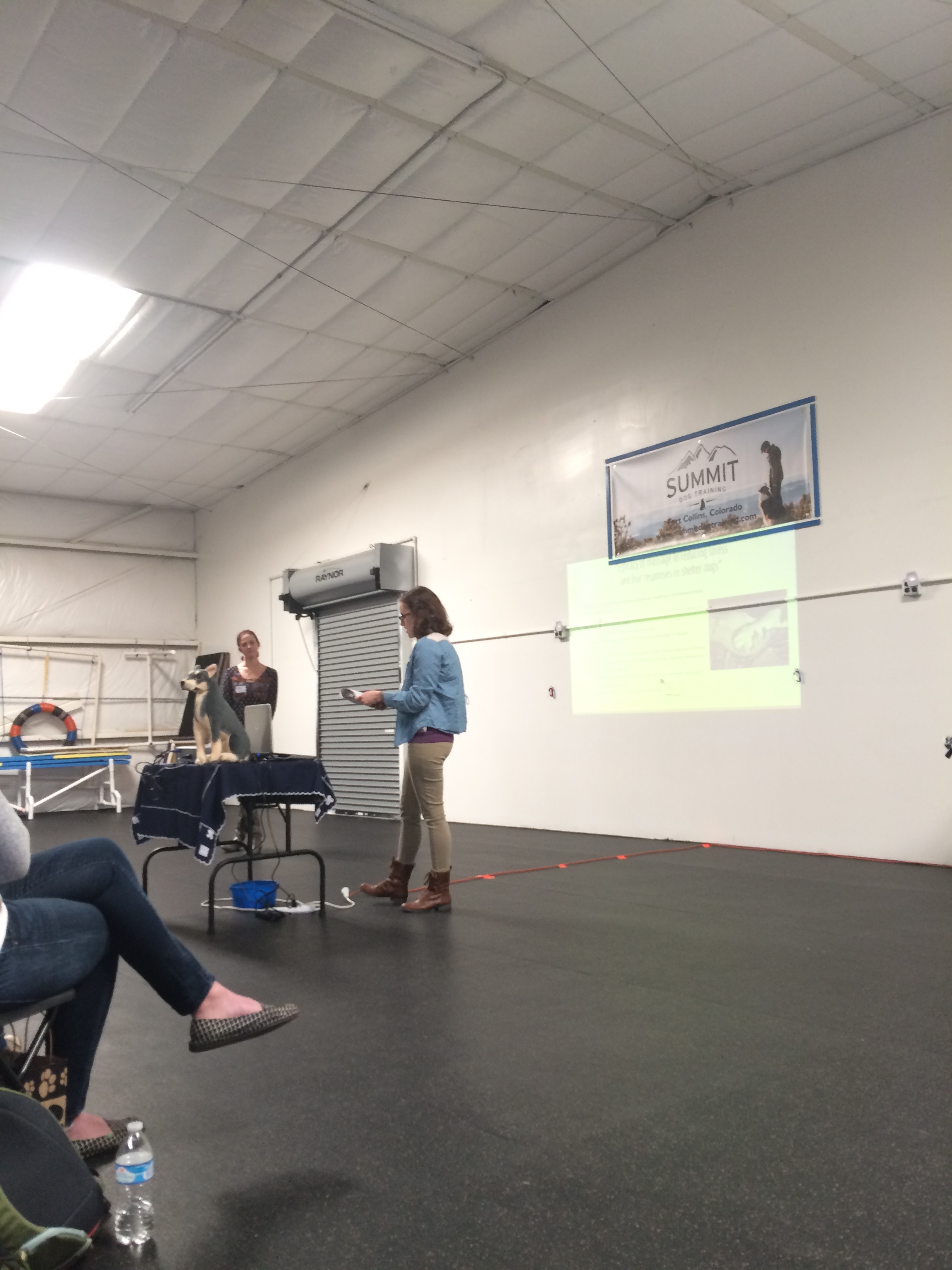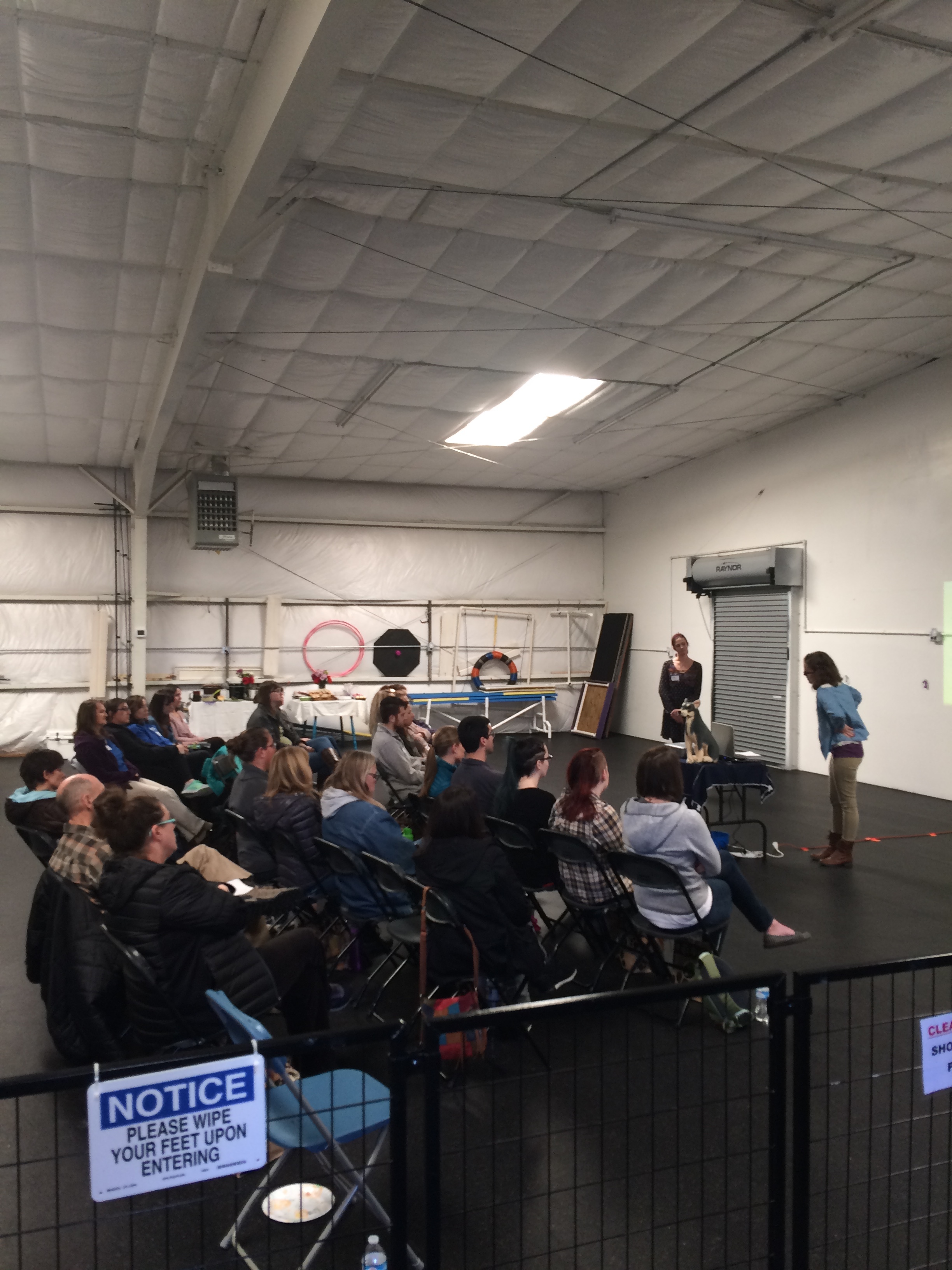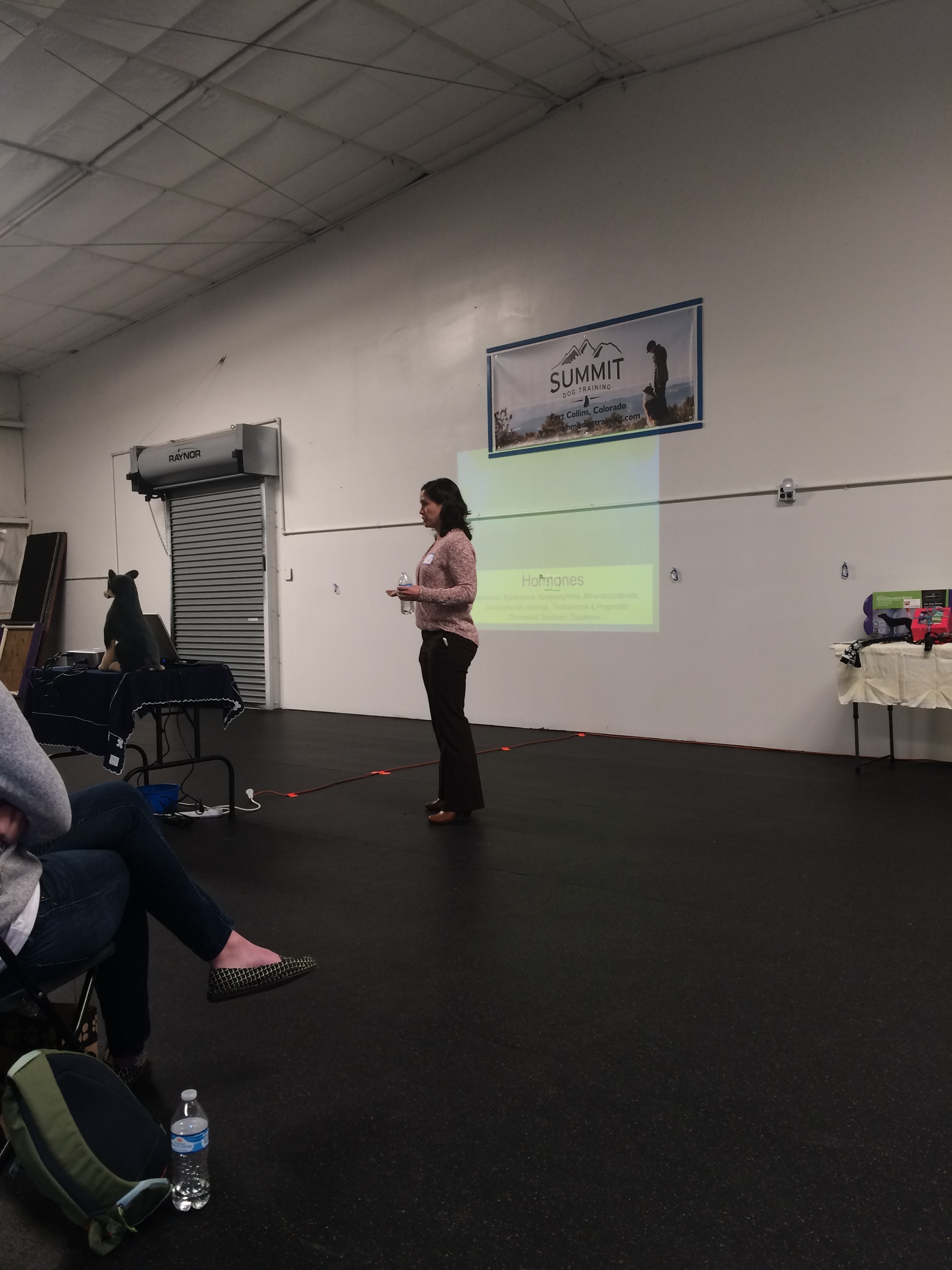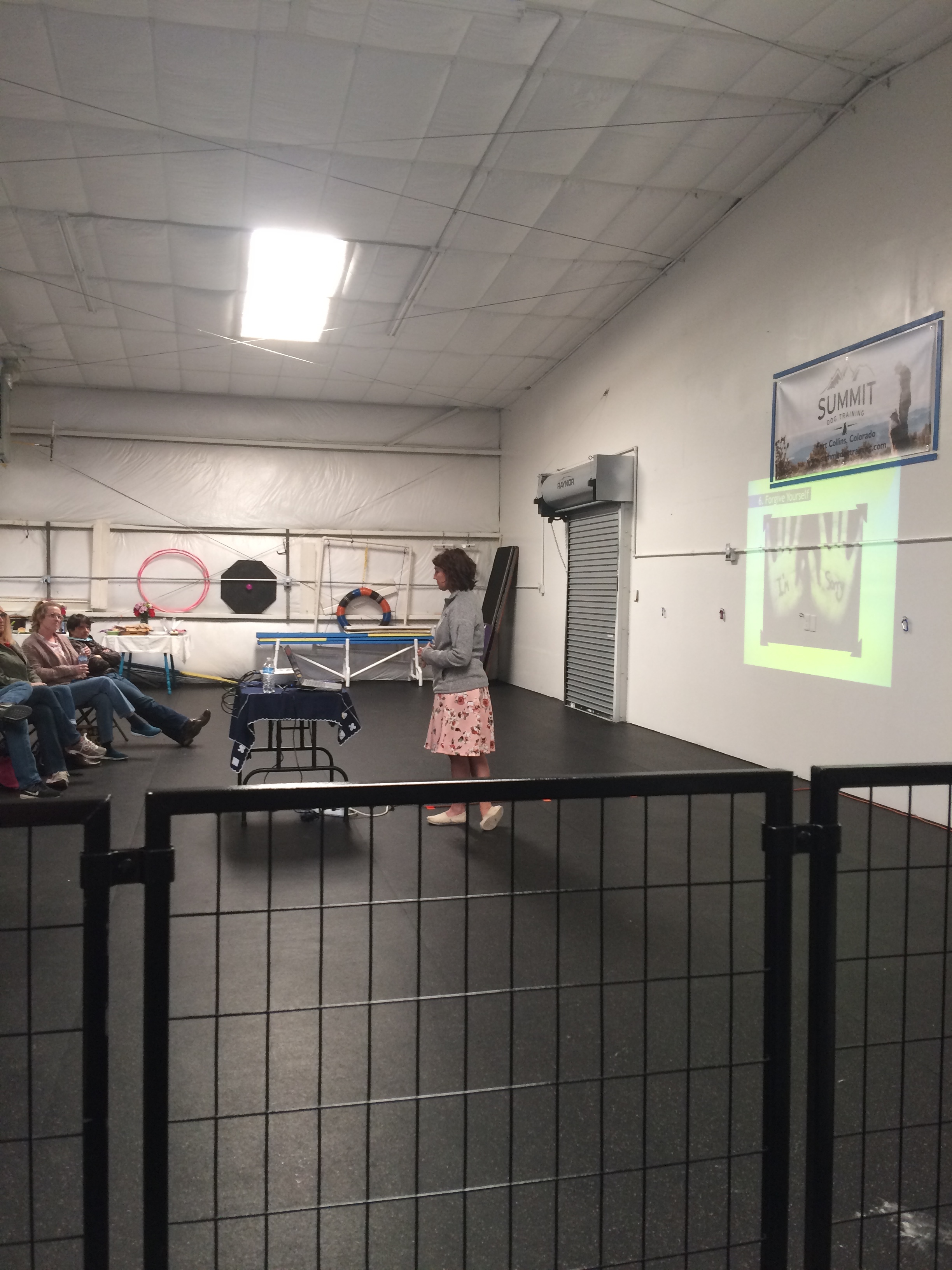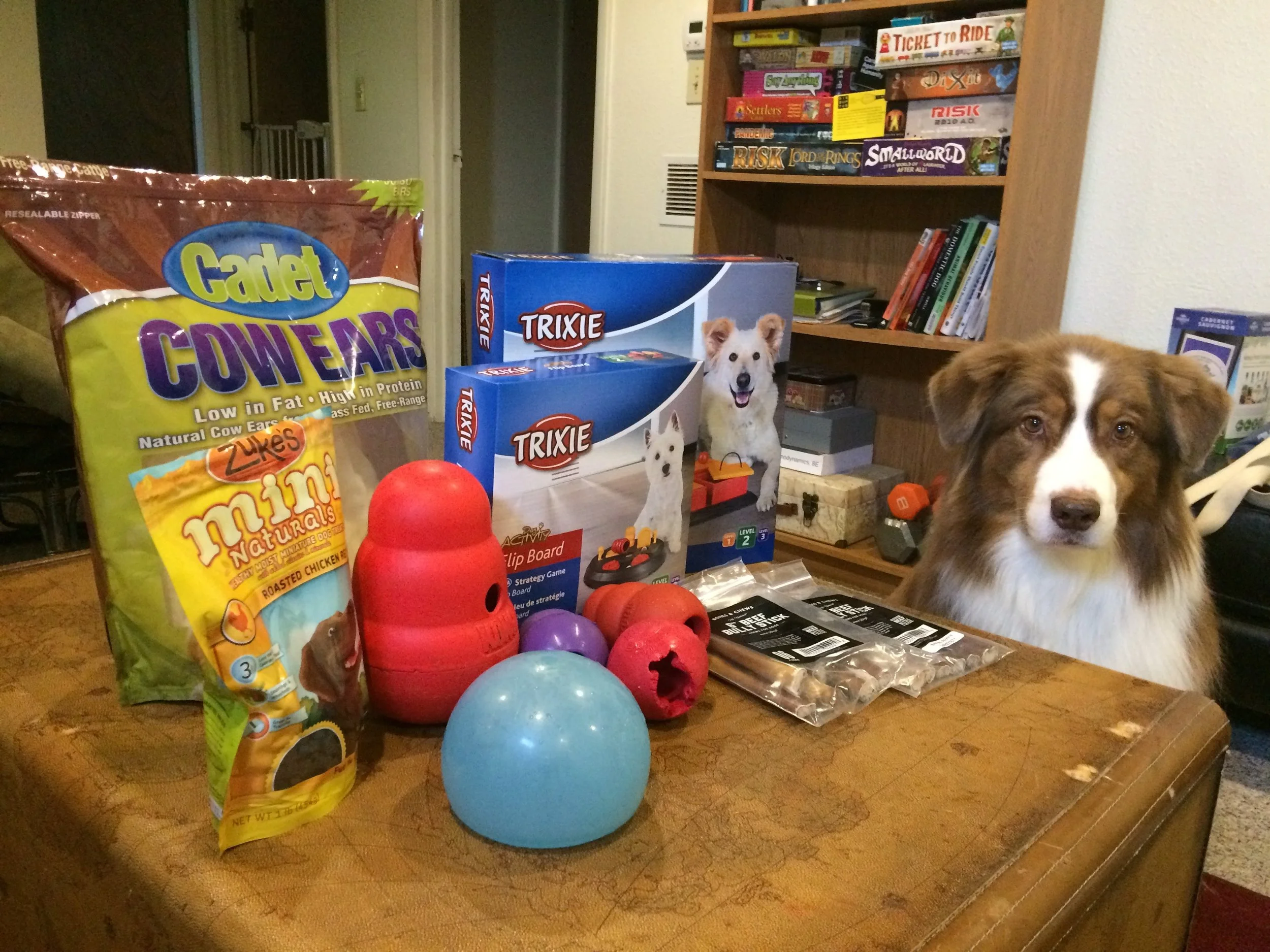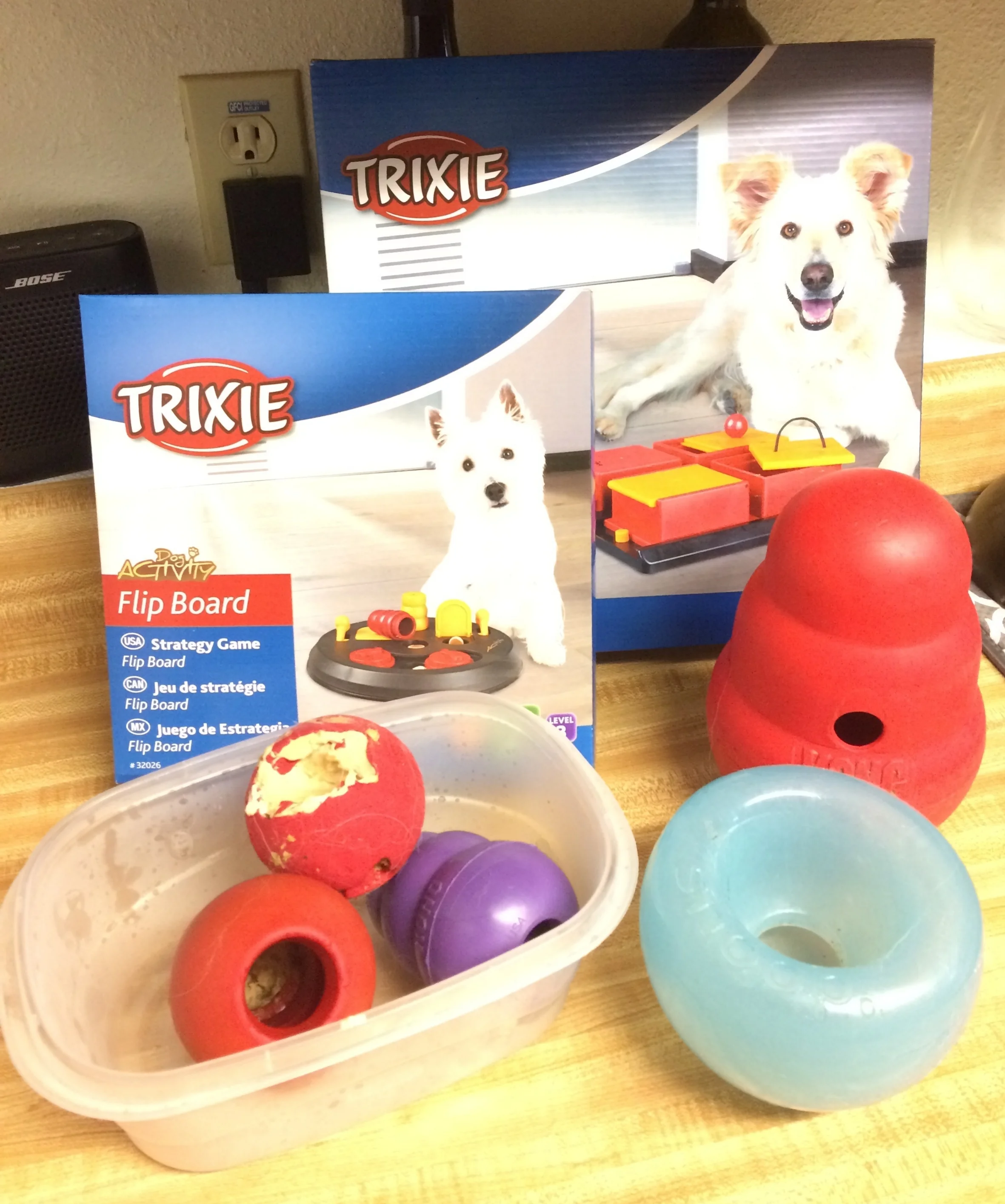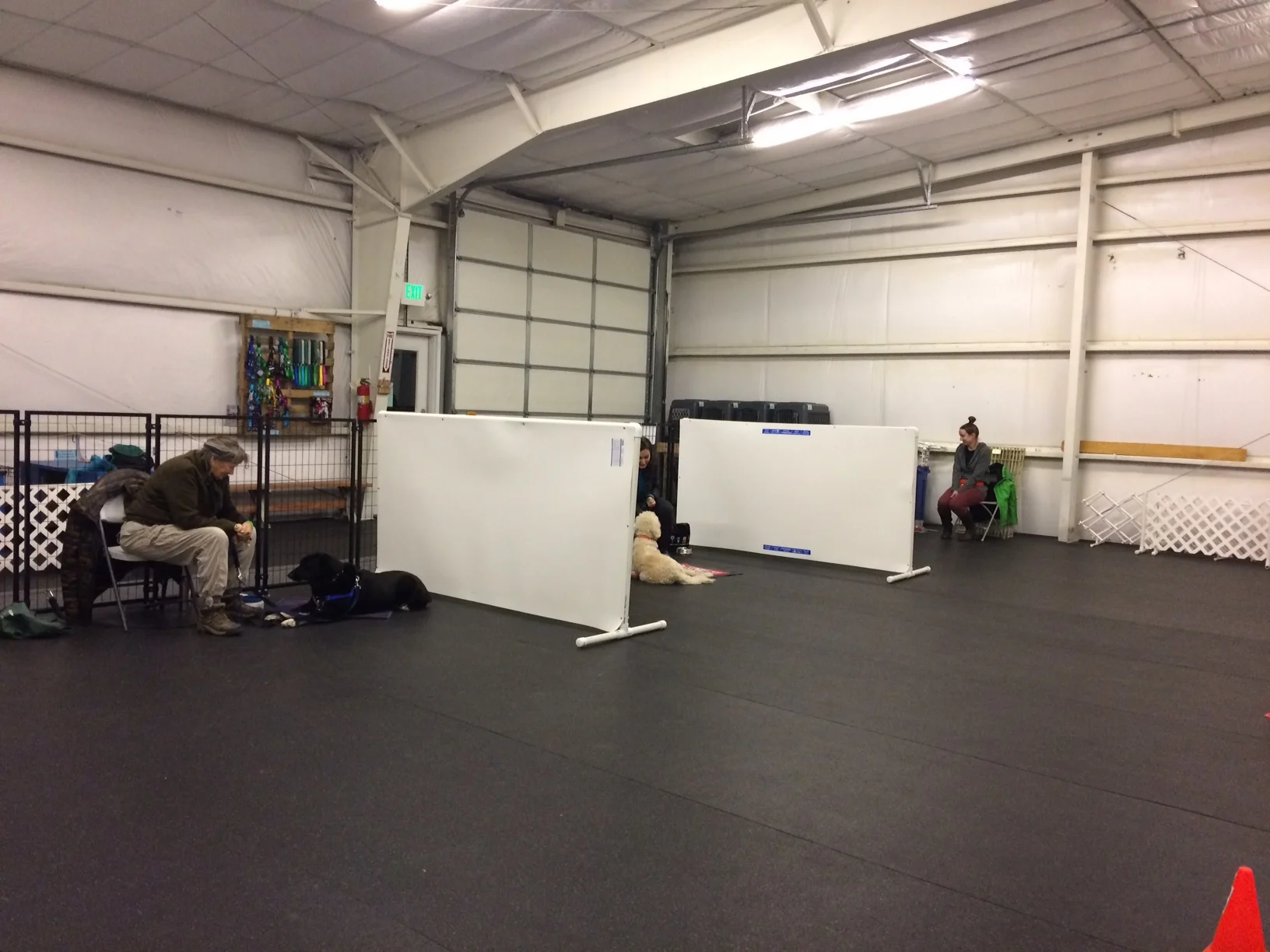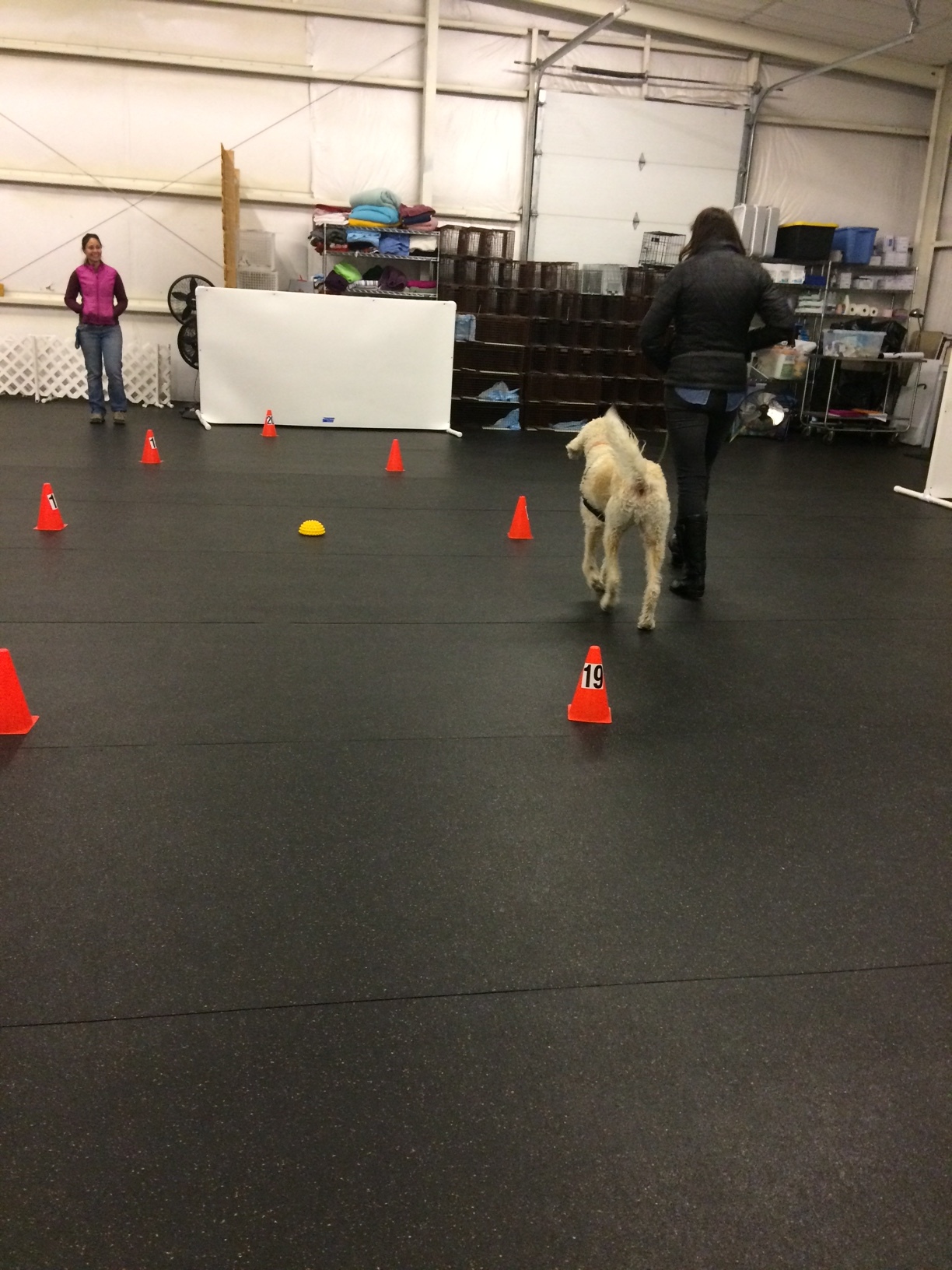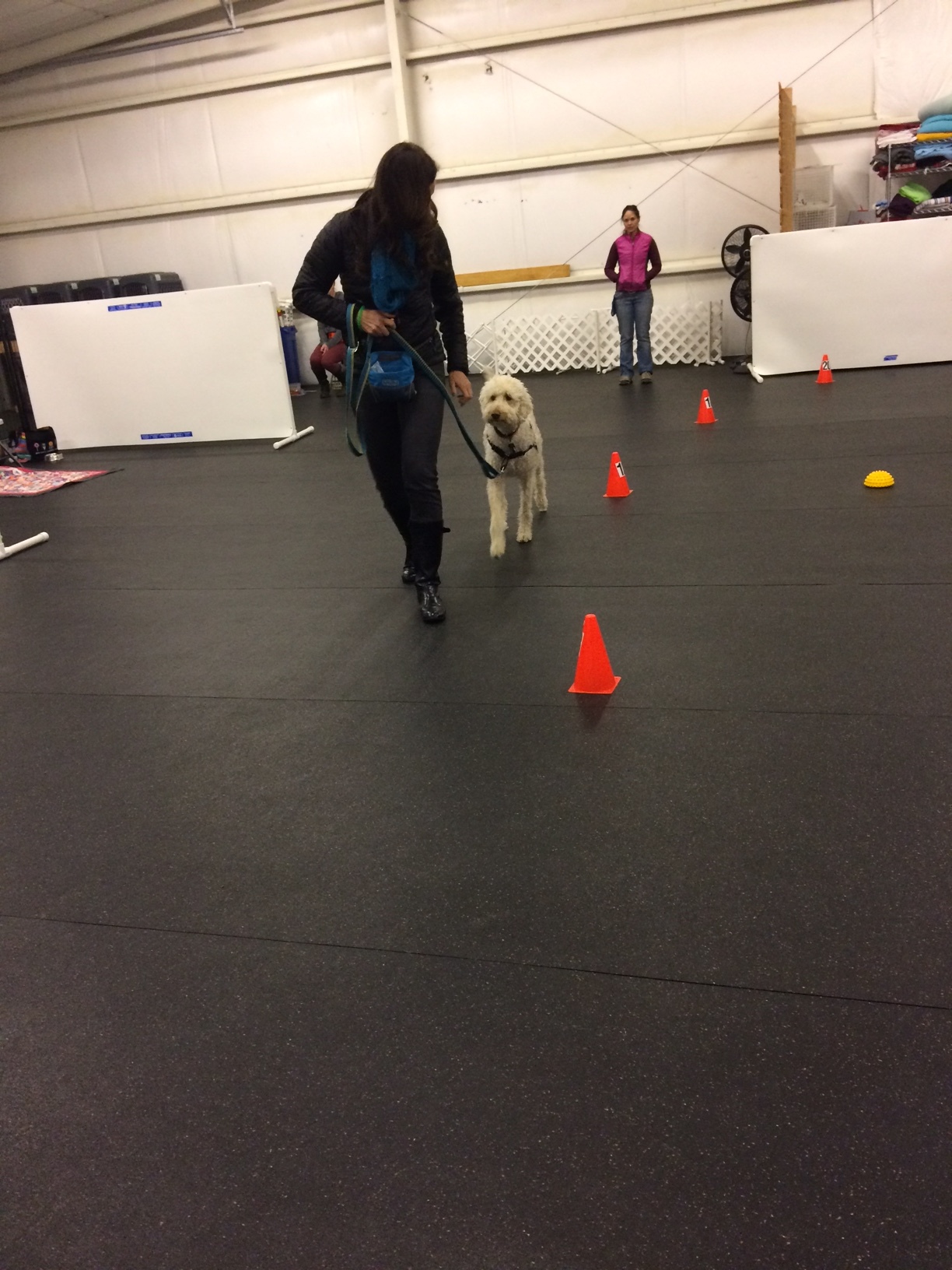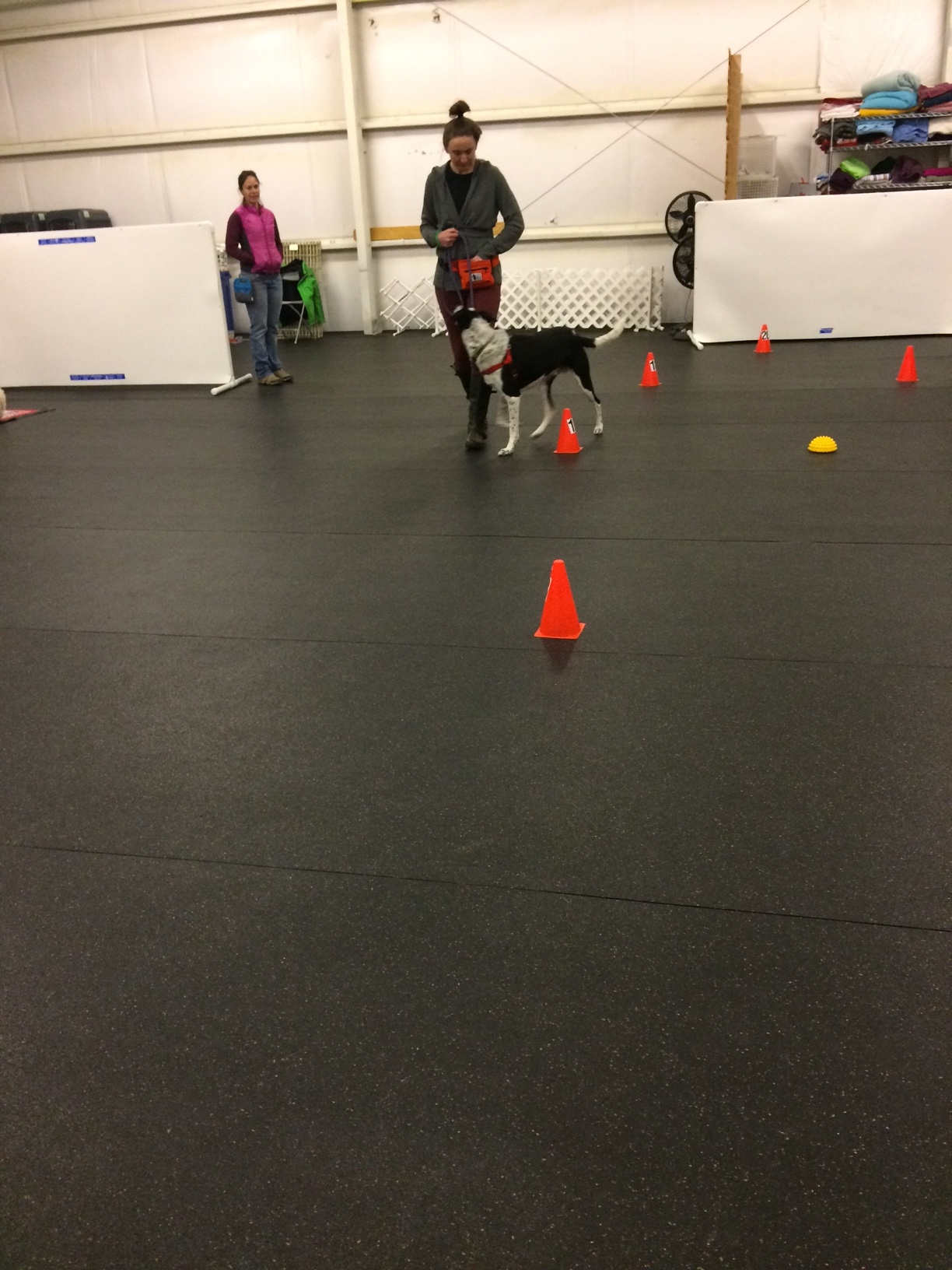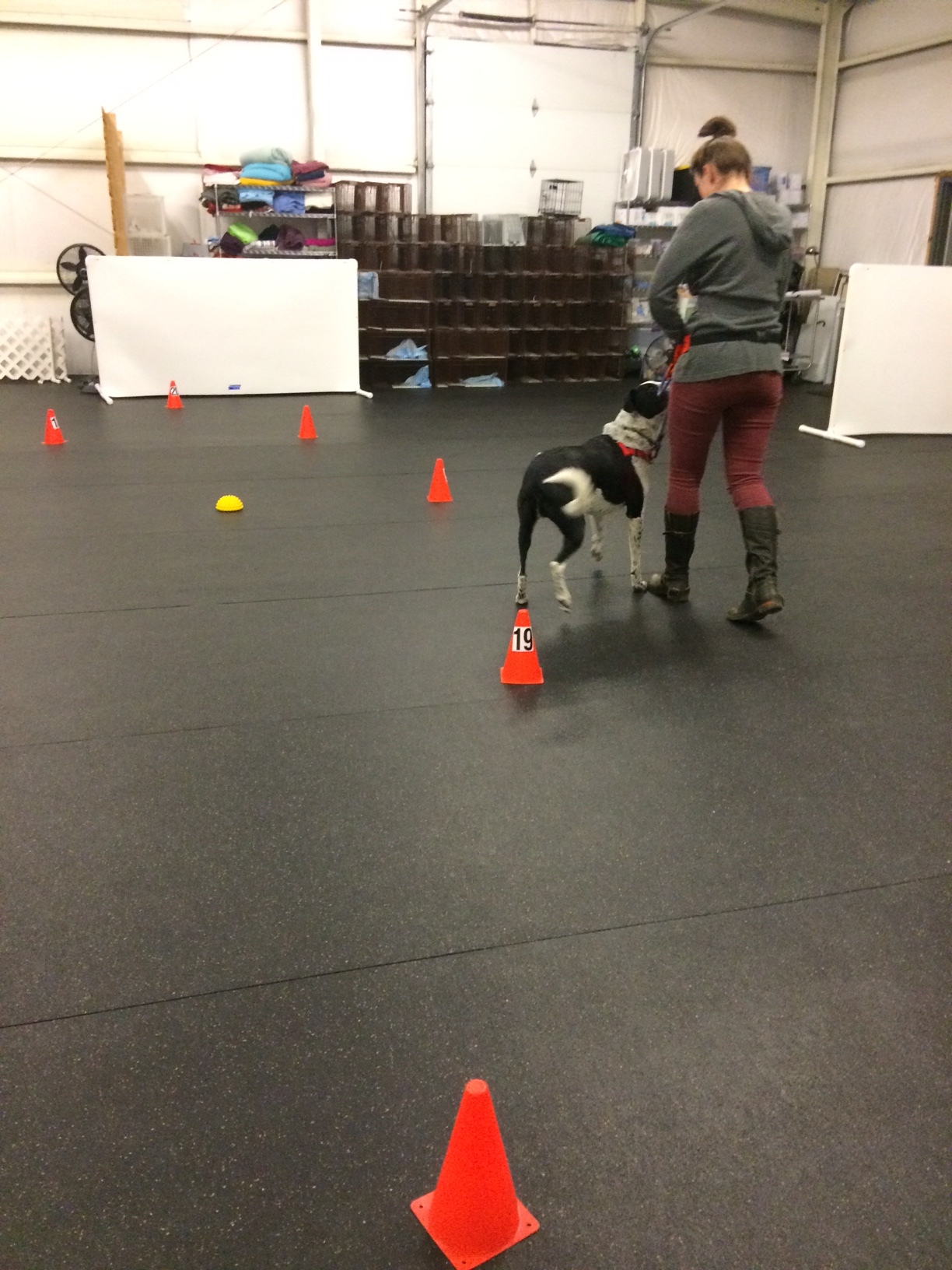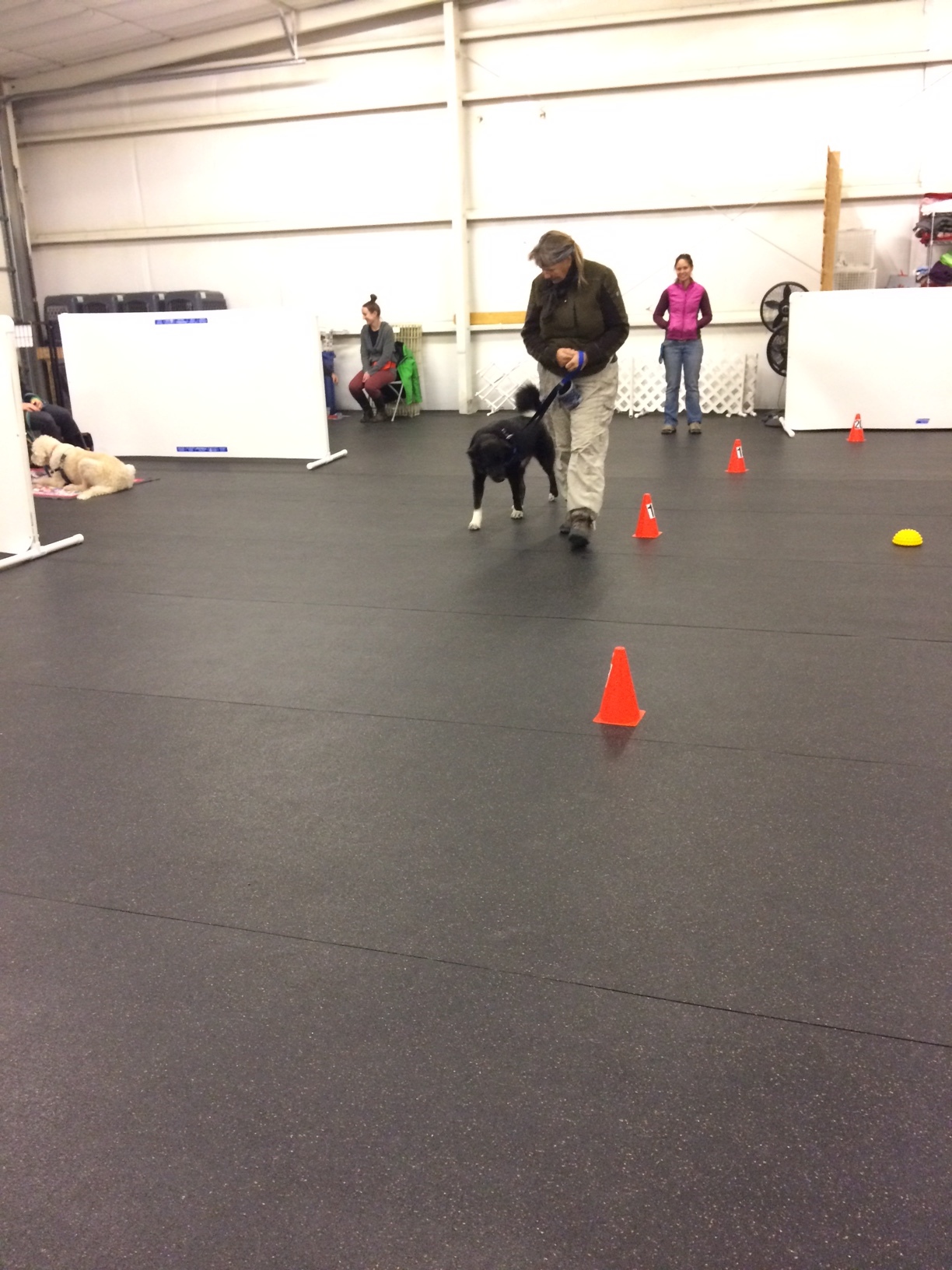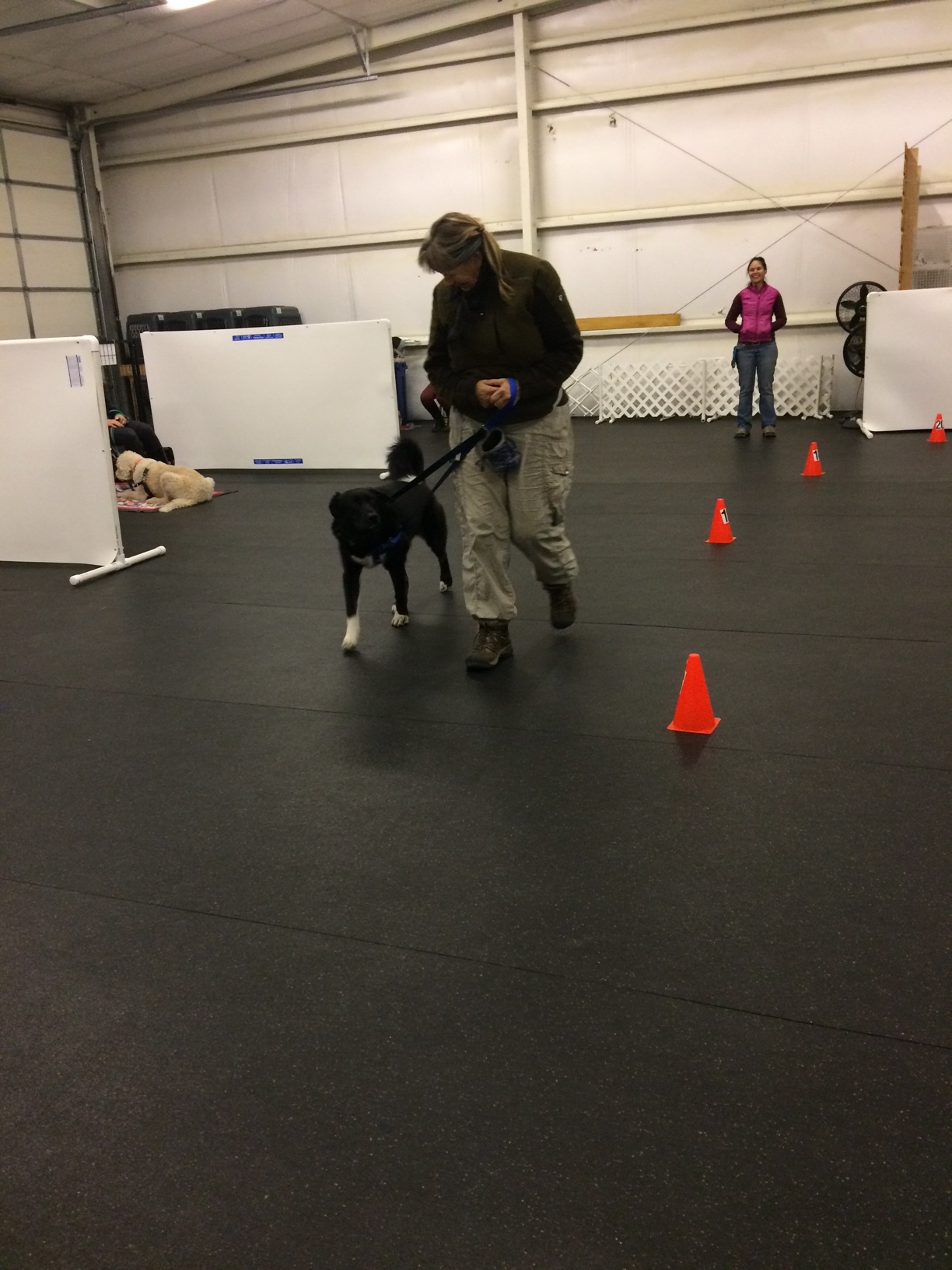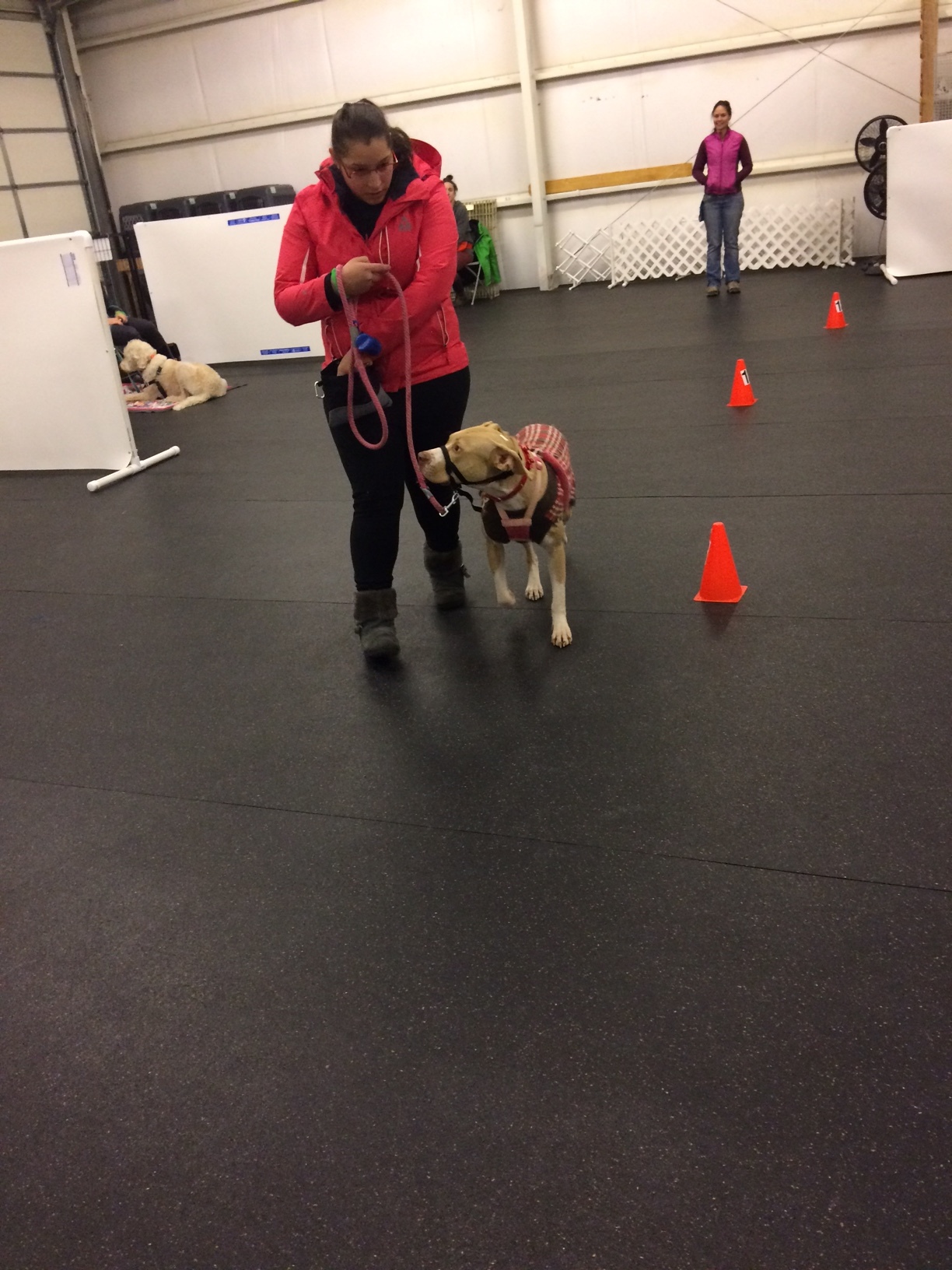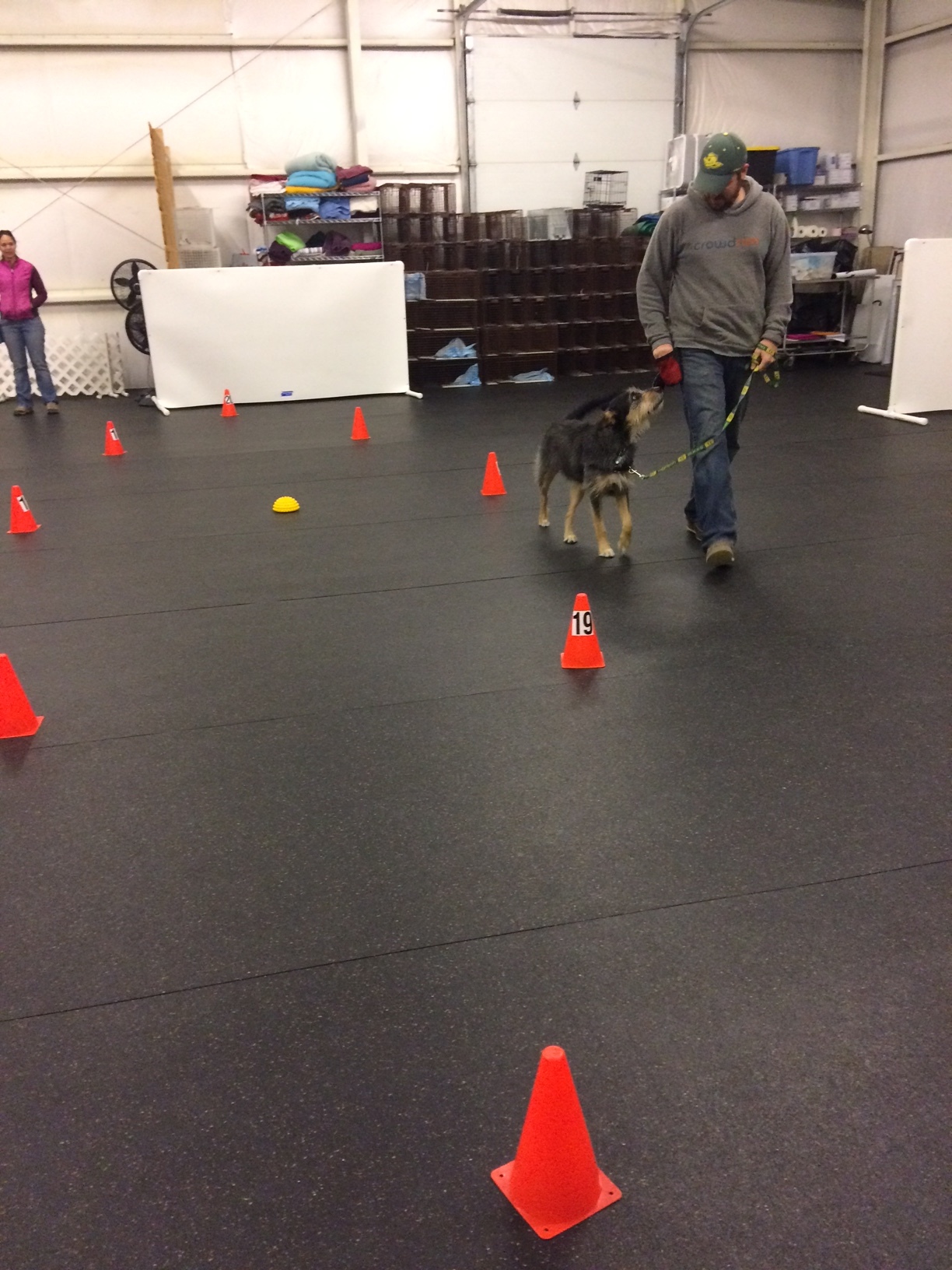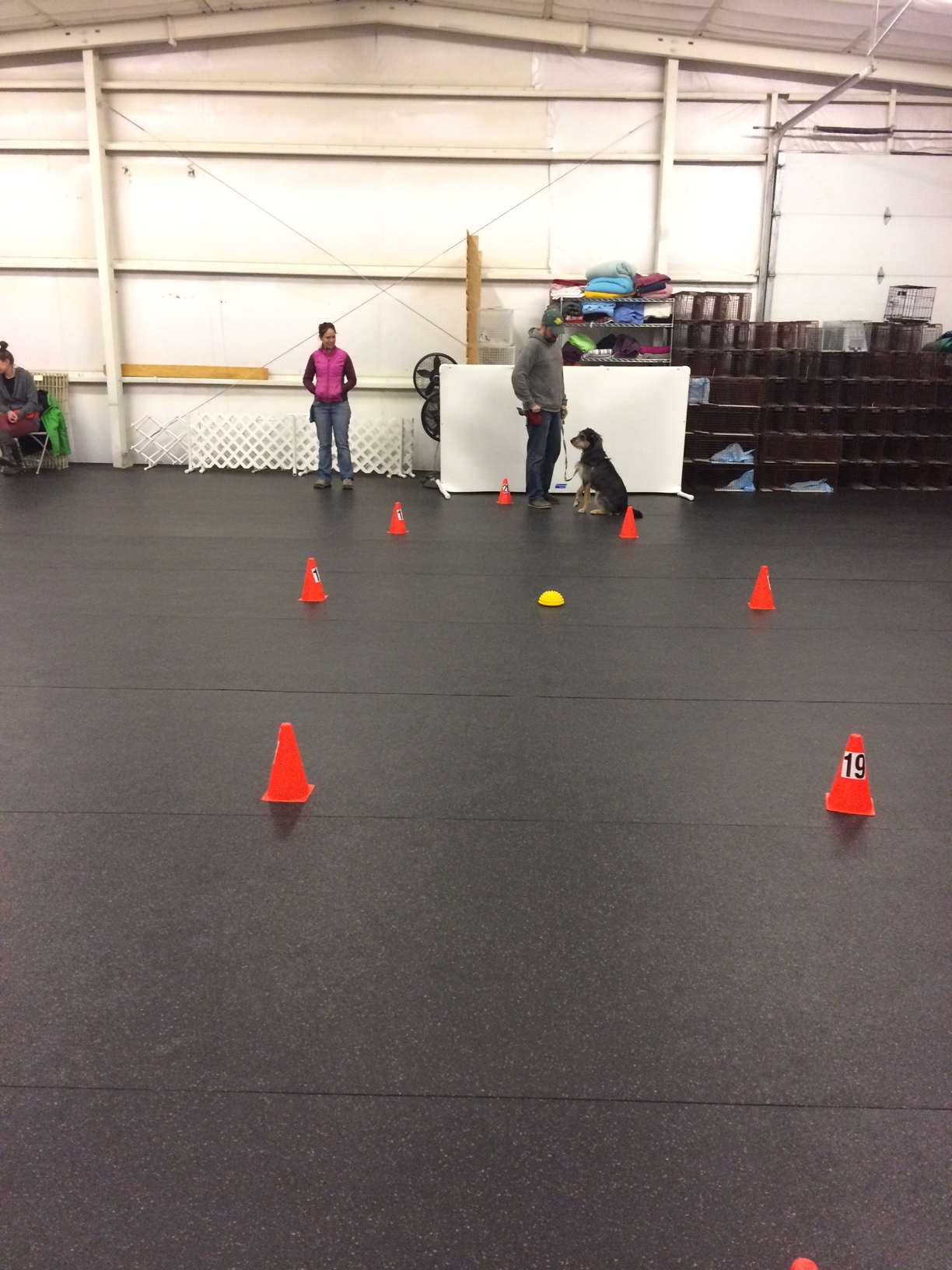There are few pieces of dog apparel more hotly debated than the “flexi” retractable leash and the prong collar. While others have written more eloquently about each of these tools individually (you can see this great list of flexi dos and don’ts here, and prong collars have lots of industry literature outlining their use and pitfalls), I have recently been seeing something more concerning to me than each tool being used a la carte. Whether you are for or against the use of either of these tools, the concept of using them in combination is something that I believe we should all vote as a bad idea. Why?
Because the flexi lead and the prong collar are designed for opposite things.
Prong collars are intended to correct a dog for pulling ahead of the owner, using the discomfort of the metal grabbing the dog’s neck. In our behavior quadrant terms, the pulling behavior is suppressed through positive punishment (dog pulls and they get an ouch!) and negative reinforcement (dog stops pulling and the ouch! goes away).
The flexi lead, on the other hand, is best used as something that encourages your dog to run out in front of you, sniff around, enjoy the scenery. In more scientific terms, the flexi offers an variable schedule of reinforcement for the pulling at the end of the leash behavior – although sometimes when they pull, it produces no give in the leash and they don’t get to move forward, other times the lock unclips and they are free to run ahead. This variable schedule is like gambling, and it actually can make the pulling behavior stronger (which is why I don’t normally recommend it for regular walks, although I won’t say it doesn’t have its place in the occasional dog’s closet).
To use both the prong collar and the flexi lead in combination is sending mixed signals to the dog, which ultimately slows down learning (if learning was your goal) or decreases enjoyment of the environment (if you really did want them to have some time to run around and be a dog). Your dog goes forward as the flexi lead is encouraging him to do, but feels the pain of the prong collar, and now has conflicting signals as to what you expect him to do (which means he may not choose to walk beside you like the prong collar was intended to communicate). Additionally he has lost the freedom provided by the flexi lead to roam and run without stress or pain in “decompression walk”-style (which is therapeutic on several levels, as beautifully discussed here).
I was going to add a picture of an embedded prong collar. But as my intention is not so shock, scare, anger, or otherwise flame counterproductive emotions with this discussion, I decided to include a picture of our handsome boys rocking their harnesses in Old Town instead. But you can always google "embedded prong collar" if you want.
There is also the safety component of using a prong collar with the flexi lead. If you’ve ever seen a dog run full speed and hit the end of their flexi lead (or long-line, or tie-out) after a squirrel or deer or whatever else they are enthusiastic about, you can only imagine the damage that could be caused by hitting a prong collar with that speed and force. Prong collars can become embedded in your dog’s skin from misuse on a regular six-foot lead; that risk is magnified the longer the leash gets.
Regardless of how you feel about using either of these two pieces of dog apparel individually, please, please, please think twice before using both on your dog at the same time. If you feel that this leash + collar configuration is the only solution to your dog’s leash walking needs and challenges, please reach out to an industry professional near you to see if they have any ideas for different equipment (we love front & rear clip harnesses at SDT!) or training exercises to get you and your dog away from this set up that is both confusing and potentially harmful for your dog.


